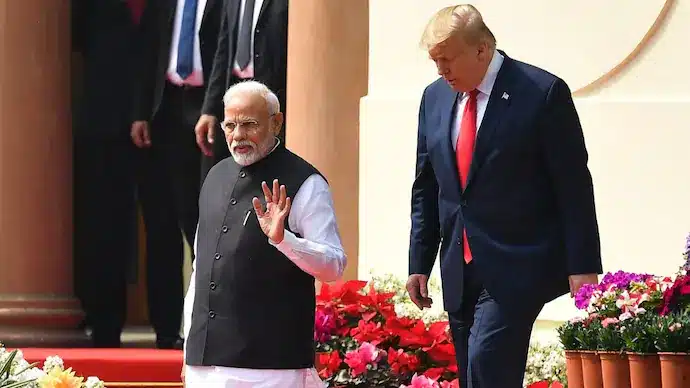Trump Eliminates 25% Tariff on India Starting Friday, Imposes Penalty for Russian Oil Purchases

US President Donald Trump has announced a significant 25% tariff on all goods imported from India, effective August 1. This decision follows the failure of the two nations to reach an interim trade agreement, raising concerns among Indian exporters. Trump attributed the tariff to India’s substantial trade surplus with the United States and its ongoing purchases of Russian oil and military equipment, actions he deemed inappropriate amid the current geopolitical climate.
Details of the Tariff Announcement
In a post on Truth Social, Trump expressed his frustration with India’s trade practices, stating, “India will therefore be paying 25%, plus a penalty for the above, starting Aug 1.” This announcement comes after months of negotiations, during which Trump had previously claimed that India would agree to reduce tariffs. The new tariff marks a shift in the U.S. approach, as Trump had earlier proposed a reciprocal tariff of 26% but later paused it, maintaining a baseline tariff of 10% on all countries. The imposition of this tariff complicates the landscape for Indian businesses, which now face uncertainty regarding pricing and market access.
The U.S. administration’s strategy has been to leverage trade negotiations to secure better market access for American goods. Over the past few months, Trump successfully negotiated with other trading partners, including the European Union, Japan, Britain, and Vietnam, to open their markets in exchange for reduced tariffs. However, negotiations with India stalled, primarily due to India’s reluctance to make concessions on sensitive agricultural and dairy products.
Impact on Indian Businesses
The announcement of the new tariff has created anxiety among Indian exporters, who fear that the uncertainty surrounding the penalty could deter buyers from placing orders. Many businesses are concerned that orders may shift to countries like Vietnam, which have successfully negotiated lower tariffs. The Indian government has made it clear that it will not accept a subpar trade deal that fails to provide adequate tariff reductions for key sectors, including textiles, leather, and automotive parts.
Indian negotiators had shown willingness to increase imports of liquefied natural gas (LNG), fertilizers, and defense equipment from the U.S. However, the demands from the Trump administration continued to escalate, complicating the negotiations further. The Indian government has been advised to leverage its growing market potential to negotiate better terms, but the lack of progress has led to frustration on both sides.
Geopolitical Context and Future Negotiations
Trump’s announcement is also viewed in the context of broader geopolitical tensions, particularly regarding India’s military purchases from Russia. The U.S. president highlighted India’s status as a major buyer of Russian energy and military equipment, linking these purchases to the imposition of tariffs. This move is seen as an attempt to pressure India into aligning more closely with U.S. interests, especially amid ongoing conflicts involving Russia.
Despite the challenges, trade negotiations between the U.S. and India are expected to continue. The Indian government remains committed to pursuing a favorable trade agreement, but the recent tariff announcement adds a layer of complexity to the discussions. As both nations navigate these turbulent waters, the outcome of future negotiations will be critical for the economic relationship between the two countries.
Observer Voice is the one stop site for National, International news, Sports, Editor’s Choice, Art/culture contents, Quotes and much more. We also cover historical contents. Historical contents includes World History, Indian History, and what happened today. The website also covers Entertainment across the India and World.

